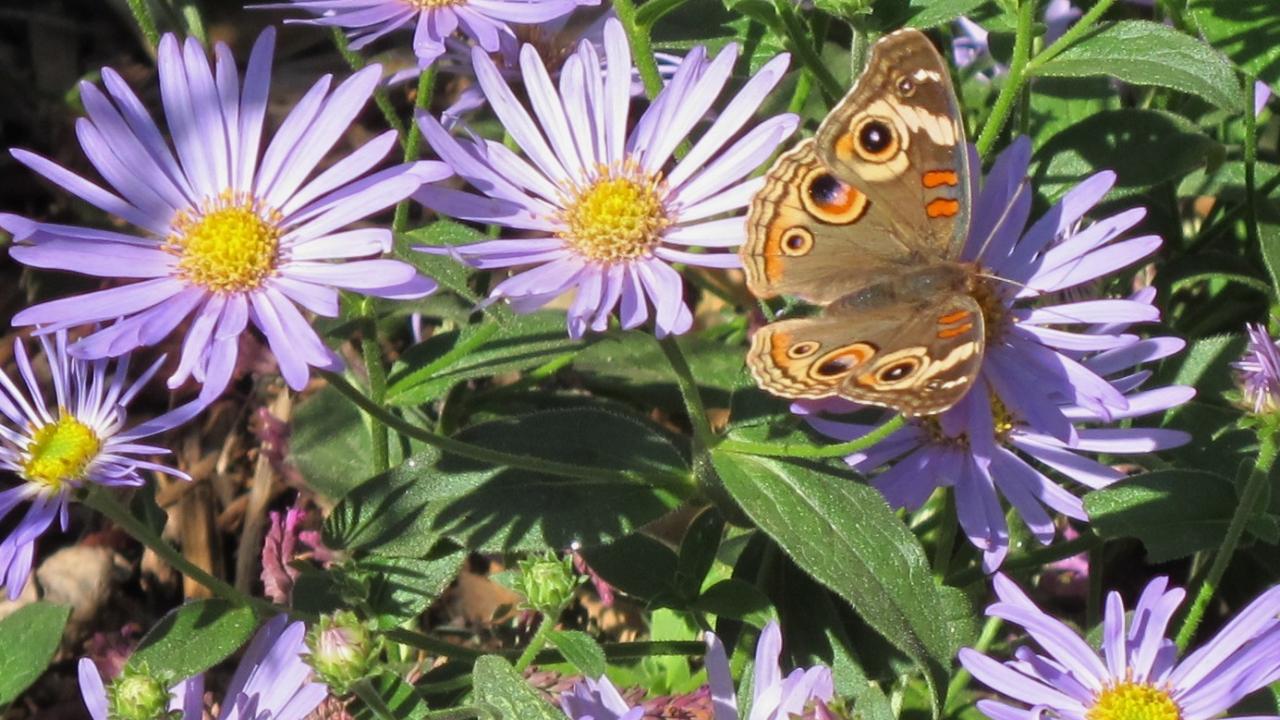
10 Rising Stars
THE ORIGINAL 100 ALL-STAR PLANTS are not the only ones that we have found to have excellent qualities for gardens in our area. This season, our Teaching Nursery staff nominated ten plants that they consider “Rising Stars.” These plants have many of the same characteristics as our Arboretum All-Stars—they are attractive, dependable, drought tolerant, low maintenance, and provide value to our wildlife. Interested in trying out some Rising Stars in your garden? They will all be available, along with many All-Stars, at our upcoming FALL PLANT SALES, while supplies last.
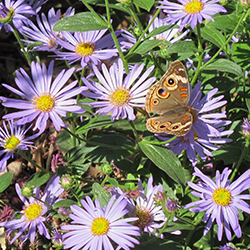
1. Aster Monk
Aster x frikartii 'Mönch'
A winter deciduous perennial that produces lots of lovely, 2-inch wide daisies in clusters in summer and fall. Long-blooming, it is a magnet for many native bees so it is perfect for the native bee conservation gardener. (Size: 2’ T x 3’ W)

2. Silvery Blue Russian Sage
Perovskia atriplicifolia 'Blue Lisservy'
This silvery blue produces metallic silver stems and leaves topped with spires of lavender-blue flowers. Drought tolerant and summer blooming, it is a great choice for attracting native pollinators. (Size: 24” T x 12” W)

3. Winter Red Geranium
Pelargonium 'Winter Red'
Diminutive in size only, this geranium produces lovely, narrow-petaled, salmon-colored flowers above green foliage especially in cool weather. This sturdy and dependable plant grows beautifully in our gardens in part shade. (Size: 18” T x 18” W)Diminutive in size only, this geranium produces lovely, narrow-petaled, salmon-colored flowers above green foliage especially in cool weather. This sturdy and dependable plant grows beautifully in our gardens in part shade. (Size: 18” T x 18” W)

4. White-Striped Century Plant
Agave americana 'Mediopicta Alba'
Well adapted to our dry summer climate, agaves have long been used as accents in California gardens for their striking sculptural form and creamy stripes. Thankfully this variety will only be half the size of its parent species. (Size: 4” T x 6’ W)
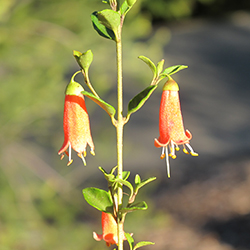
5. Australian Fuchsia
Correa pulchella 'Orange Flame'
The beautiful rusty-orange flowers of this low, evergreen shrub brighten up gray winter days and provide a sought-after food source for hungry hummingbirds. Plant it in well-drained soil, partial shade, and enjoy! (Size: 2’ H x 3’ W)
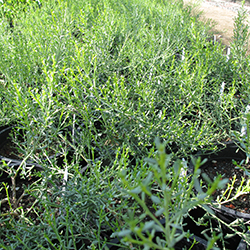
6. Centennial Coyote Brush
Baccharis 'Centennial'
Propagation Manager Lisa Fowler loves the feathery flowers of this hybrid shrub. It is tough, drought tolerant and useful as a large-scale ground cover. (Size: 3’ T x 3-5’ W)
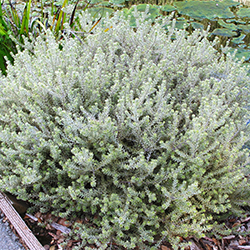
7. Australian Rosemary
Westringia fruticosa
With grayish leaves that produce small white flowers for much of the year, coast rosemary provides a useful option for the lowwater gardener. It has been dependable and long-lived for us and is hardy to about 20°F. (Size: Certain cultivars mound to 4-6’ T x 4-6’ W )

8. Oak Leaved Hydrangea
Hydrangea quercifolia
Missing masses of flowers in your low-water garden? Fear not! When grown in the shade, these oak-leaved hydrangeas not only tolerate our water and heat, they produce large white, conical, long-lasting flowers. (Size: 4’ T x 3’ W)

9. Warriner Lytle Buckwheat
Eriogonum fasciculatum 'Warriner Lytle'
Buckwheats provide a tough alternative guaranteed to bring movement to the garden when creatures come to collect its bountiful pollen and nectar. With needle-like leaves and a cloud of white flowers that turn copper by fall, this is a useful ground cover for dry areas. (Size: 12” T x 6’ W)
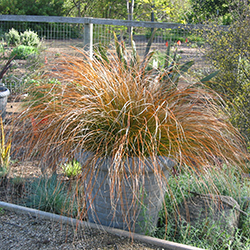
10. Orange New Zealand Sedge
Carex testacea
An evergreen plant, this New Zealand sedge needs shade in the Central Valley and some summer irrigation. Useful as an accent in container plantings, it’s stunning when backlight by the winter light where it will glow a lovely orange. (Size: 4’ T x 3’ W)
